Zara Sigglekow – 28 August, 2015
The Mechanic can be seen as the metaphoric basis of structures from capitalism to ecology: supposedly smoothly functioning order containing dull inducing repetition - but prone to breakage, slippage and leaks. As such is rooted in systems, but ripe for unctuous multiple readings and metaphors.
The Mechanic takes its title as a premise, a character, a metaphor, and binding connector between the artworks in a show that compounds works from disparate periods, locations and concerns. Exploring subjects ranging from the art industry to the body, the exhibition is underlain with sinister speculative unease.
Geoff Newton, the director of the gallery and curator of this show, is known for project shows that pair older contemporary works with current Australian artists. For example Benglis 73/74, which considered the influence of Lynda Benglis’ notorious 1974 ad/artwork in Artforum on contemporary art practice. This exhibition took a similar approach.
As an archetype (1) The Mechanic brings to mind a tradesman figure, an assembler of parts - a fixer. The mechanic is contemporary, yet inexplicably tied to industrialisation where machinery became an integral part of economic production, and to the engineering of the city. He is practical yet the oiliness of his medium leans towards the abject. In the realm of sci-fi he can be the machine gone bad, the mechanical, libidinal body out of control. The Mechanic can be seen as the metaphoric basis of structures from capitalism to ecology: supposedly smoothly functioning order containing dull inducing repetition - but prone to breakage, slippage and leaks. As such is rooted in systems, but ripe for unctuous multiple readings and metaphors.
The exhibition has a gritty and urban aesthetic. Some works lean to realist representations - such as photographs of ramshackle dwellings by Janet Burchill and Jennifer McCamley, and Lee Lozano’s meticulous cross section of a powerdrill (A Boring Drawing, 1963-69). Others play with material expectations: certain objects look solid but are soft, an investigation of materiality and fragility.
Eduardo Paolozzi’s Rosenthal Studio Line, 1978 on first glance appears as if made of a greyish rubber as opposed to porcelain. Like a relief tile it is imprinted with mechanical forms, a surrealist circuit board. The work is an addition of 3000 adhering to the mass production focus of Pop Art. Besides it sits Franz West’s sculpture Privatelampe des Kunstlers 11, 1989, a light bulb elegantly poised on top of a welded iron chain.
Matt Hinkley’s work Untitled, 2010, is similarly deceptive. Wire is molded to create a contorted cube shape, which is covered in silicon and stained with a soft purple pigment. Close inspection of the sculpture’s surface reveals markings of its maker. The poetic slightness and adherence to deft remnants of the hand bring to mind the work of Fiona O’Connor and Kate Newby, whose works often contain such inflections.
Looping on a Mac computer sitting on the floor is a video work by the late Chris Burden (in collaboration with Willoughby Sharp and Robert Burden) The Big Wheel, 1980. Interviewed by art critic Willoughby Sharp, Burden discusses his kinetic sculptural work, a huge spinning cast-iron flywheel powered by a motorcycle, describing it as containing the ambivalence of power: comforting yet menacing. Ronald Feldman, Burden’s art dealer, is also interviewed and deliberates the production cost of art, and operational cost of running his gallery thereby revealing the commercial functions of the arts industry - an economic machine itself.
An unusual addition to exhibition, and a firm indictment of horror of the machine, is seen in Shinya Tsukamoto’s underground cyberpunk film Tetsuo: The Iron Man (1989) (2). The protagonist is gradually overtaken by scraps of metal, set in the alleyways, apartments, and metal strewn underbelly of the city. The film is an unpleasant watch containing in true Japanese style, scenes of sexual horror; the body’s boundaries are blurred in mechanical abjectivity.
Elizabeth Newman’s pieces perform a philosophical exploration of mechanical logic and order. Two of her works were included in the exhibition: a steel rusted barrel sitting on the gallery floor (Untitled, 2008) and an abstracted sculptural form (Untitled, 2008) on the wall. They are from a solo exhibition by Newman in 2007 titled, The Unprecedented Dark Light of the New Letters. It’s a deliberate misquote from an essay on Alain Badiou which referred to the impact of modern science on philosophy: the discovery that the world is composed of algebraic units which decreases the impact of the human subject on the construction of the world (Newman quotes Badiou: Ontology = mathematics)(3). Interpretation here becomes vaguely sci-fi, the works material references humans mechanical overlay of the world that is constructed by mathematical logic and systems.
This exhibition deftly jumps between subtle philosophy, a focus on form, and an eclectic mix of mediums. The Mechanic is a sparse yet loaded archetype and metaphor, a darkly imaginative lens by which to probe new insights into the assembled works.
Zara Sigglekow
(1) Here I’m using The Mechanic loosely as an gender neutral ‘category’ akin to Tiqqun’s Young-Girl, and Hilton Als’s essay anthology, ‘White Girls‘.
(2) An edited version of this film was used in Portishead’s Machine Gun music video.
(3) The essay on Badiou that Newman ‘misquoted’ comes from ‘Masters & Disciplines: Institution, Philosophy, Praxis,’ by Paul Ashton, A.J. Bartlett and Justin Clemens in The Praxis of Alain Badiou. Seddon, Vic: re.press, 2006.

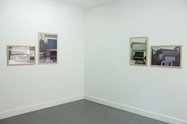








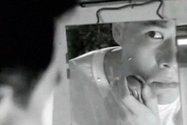

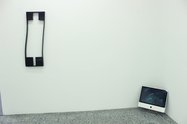

 Two Rooms presents a program of residencies and projects
Two Rooms presents a program of residencies and projects Advertising in this column
Advertising in this column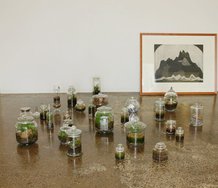
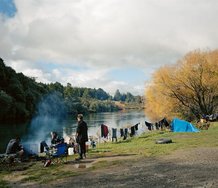
This Discussion has 0 comments.
Comment
Participate
Register to Participate.
Sign in
Sign in to an existing account.